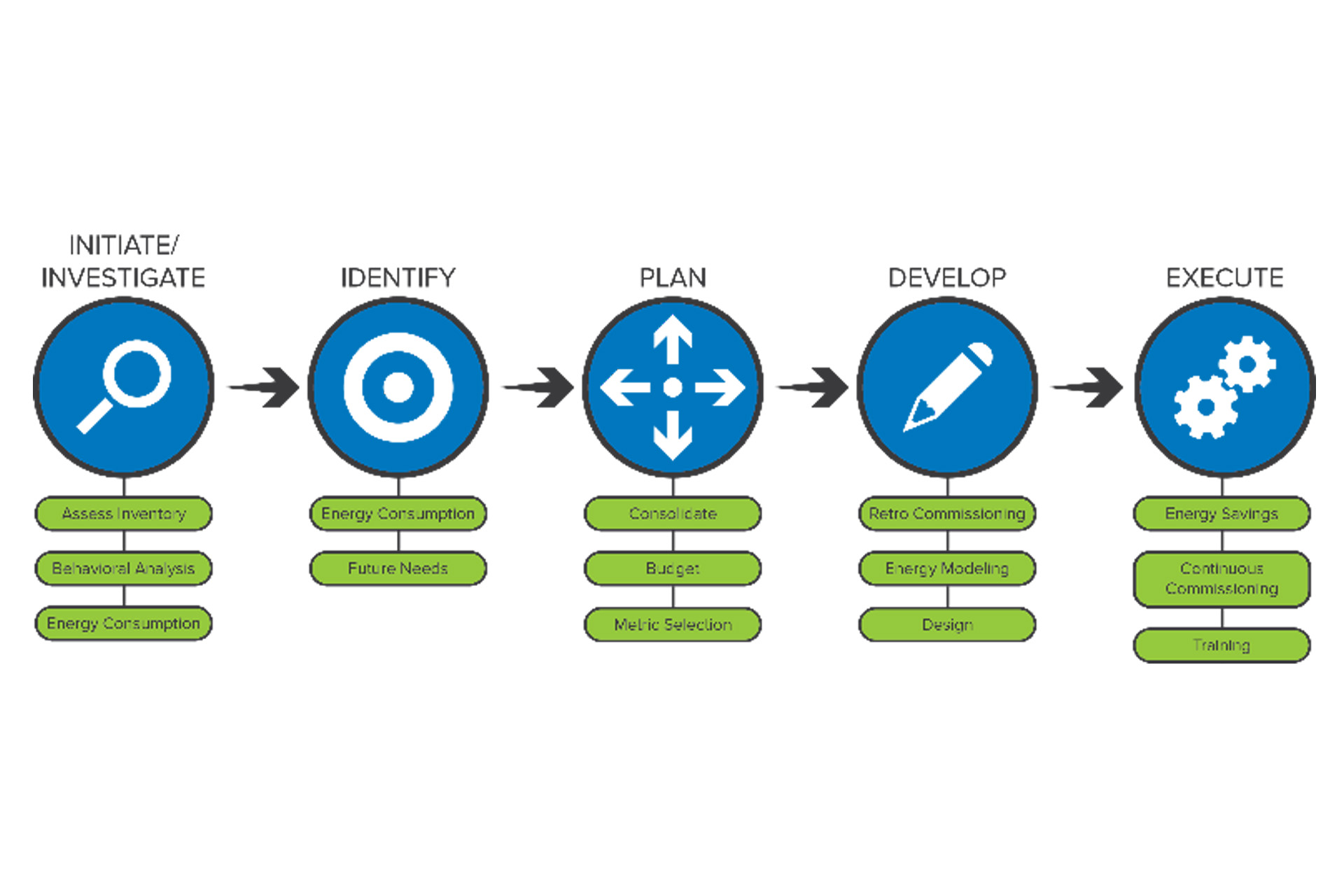To support the Navy in achieving goals to reduce energy consumption, improve utility reliability/energy security, and reduce energy-related costs, the Clark Nexsen energy team and our consultant, Navigant, have been performing a series of studies to develop technical and acquisition solutions to enable large-scale implementation of smart energy technologies. The foundation of the Navy’s Smart Grid Program relies upon successful integration of thousands of disparate industrial control systems (ICS) and the ability to centrally monitor and control the consolidated ICS.
The process for Navy Smart Grid implementation begins with investigation and analysis of the current and future outlook of the Navy’s ICS and subsequent identification of viable, smart energy projects to support ICS cosolidation. Navy Smart Grid implementation then follows a series of logical steps through execution.
The benefits of Smart Grid technology can be substantial. Through an analysis phase that includes a comparative lifecycle cost analysis, the study looks at how to maximize the return on investment based on projected energy cost savings. Energy cost savings associated with changing technology are predominantly generated through retrocommissioning, the expansion of existing building automation systems to enable advanced energy control strategies, the addition of new building automation systems to high energy-intensity buildings, and leveraging information across disparate systems to reduce wasted energy.
The implementation of smart energy technology benefits clients across multiple markets by arming them with the data needed to assess their situations and make informed decisions for better and more efficient energy consumption and distribution.

